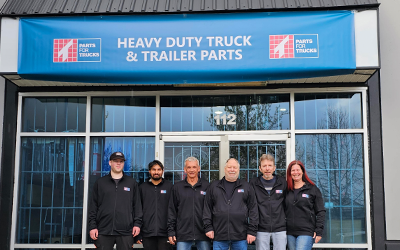Do it Right: Installing Conspicuity Markings on Stainless Steel
By: Parts for Trucks

Maintaining the integrity and visibility of conspicuity markings on stainless steel trailers is crucial for safety and regulatory compliance. Adhesion challenges can often arise, posing a potential risk if not addressed effectively. In this guide, we will explore key considerations to overcome adhesion problems on stainless steel surfaces, offering practical tips to ensure the longevity and functionality of conspicuity markings.
Placement
Markings should be placed to avoid the hot wash water on the lower rear of stainless steel tankers. Applying the markings on the cabinet covering, the rear valve or anywhere above the rear valve is recommended. On the sides of the tanks, avoid the obvious spill areas directly under the fill receptacles.
Application Temperature
Cold temperatures can result in less than acceptable adhesion to stainless steel surfaces. For best results apply markings to surfaces that are above 15°C. And in winter, allow the adhesive to “set” for several hours indoors before subjecting the surface to outside temperatures.
Surface Preparation
All surfaces should be thoroughly wiped using a solvent such as isopropyl alcohol. Use a clean lint-free paper towel for this purpose, and not “shop rags”. Any residue on shop rags could seriously impair the adhesion of the markings. A final wipe with distilled white vinegar will give a slight etch to the stainless steel surface which will enhance the adhesion of the markings. Finally, all markings must be pressed firmly in place using a plastic squeegee – NOT WIPED DOWN USING YOUR HAND.
By carefully following the above tips, the conspicuity markings on your stainless steel trailers will be fully functional and durable for a long time to come.
Belts Don’t Last Forever
Proactive belt inspections prevent downtime. Choose the right fan belt for seamless, reliable vehicle performance.
Parts for Trucks Inc. announces acquisition of Trailine Trailer Parts in Surrey, BC.
Hey Vancouver (well Surrey technically), meet Parts for Trucks!
Mistakes EVERYONE Makes when Putting Away their Fisher Equipment for the Summer
If you’re tired of dealing with rusted components or damaged belts when you take out your plow after a long summer of storage, this video is for you. Don’t make the same mistakes as everyone else.





